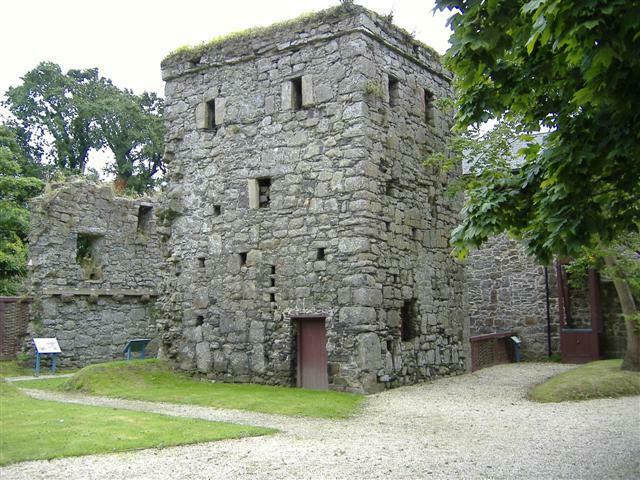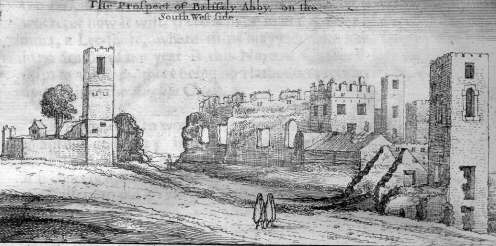About
Site Directory
Copyright © 2024 www.isleofman.com
All Right Reserved
powered by 
Copyright © 2024 www.isleofman.com
All Right Reserved
powered by 


Rushen Abbey, or of the Abbey of St. Mary of Russin, is situated on the western bank of the Silverburn river -close by the village of Ballasalla.
It falls within the parish of Malew and the sheading of Rushen, two miles north of Castletown.
Possibly the first view is that by Daniel King, c.1650:

In 1134, King Olaf I founded the Abbey and granted the land to Sauvignac monks of Furness Abbey.
The Abbey came under the Cistercian rule in 1147 and remained so until its closure. Under Cistercian rule, it developed as the main seat of political power and housed the main body of knowledge and literacy on the Island. Around the period 1257, the Chronicles of Mann were written at the Abbey.
The parishes of Malew, Lezayre and Lonan were under its jurisdiction, which in turn formed an agricultural and economic unit far in excess of any other estate on the Island at that time.
Works were started in 1192 on enlarging the monk's accommodation, and by 1257, Rushen Abbey was completed.
During the reign of John Stanley II (1414 - 1452), codified laws were restored in a campaign to curb the power of the Church. The first Act introduced forbade the Abbott from giving shelter to any 'felon' who turned up looking for safe refuge.
Many Acts were to follow which would strip the Abbott of most of his control. In 1422, one Act was passed which denied the Abbott from receiving any monk or priest as a resident without the licence of the Lord of Man.
The Abbott was also forbidden from receiving any strangers without informing the Lord of Man where they came from, where they would go, and details about their person.
By the 16th century, Rushen Abbey had been dissolved.
400 years later, at the beginning of the 20th century, the Abbey had become a very successful tourist attraction (an official Island postcard at the 1924 empire exhibition even showed the Rushen Abbey Hotel): the nearby gardens provided fruit for a jam bottling plant which supplied the raw materials for Manx cream teas.
After WWII, the grounds fell into disrepair. Two buildings - a steakhouse cafe and a nightclub - were erected on the gardens and the hotel closed.
The grounds became a national disgrace but the owner refused to sell at a price Manx National Heritage would pay; the land was then acquired by the owner of Bishopscourt with an eye to building some form of conference centre (modelled on a conjectural plan of the Abbey).
This, however, caused such local furore that eventually the grounds were acquired in 1998 by Manx National Heritage. They developed it into a heritage centre as part of the Story of Mann - the remains of the original abbey were restored and archaeological investigations of the site still continue.
The Abbey is open from April - October between 10am - 5pm
Just north of Rushen Abbey is a pack-horse bridge built in the 1350s. This was built so that monks who had farms in the north of the Island could cross the Silverburn river. It is one of the few surviving pack-horse bridges in the British Isles.
Photo: kevin rothwell, CC BY-SA 2.0, Link